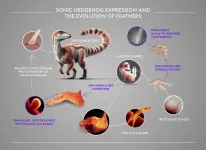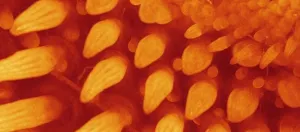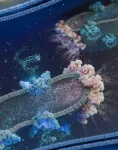(Press-News.org) March 20, 2025 — Placing an external ventricular drain (EVD) at bedside using augmented reality (AR) guidance is more precise than freehand placement and is associated with fewer reinterventions and complications, according to a clinical pilot study of a novel system. Frederick Van Gestel, MD, a neurosurgery resident at Universitair Ziekenhuis Brussel and PhD researcher at Vrije Universiteit Brussel in Brussels, Belgium, and colleagues report first-in-human results in Neurosurgery, the official publication of the Congress of Neurological Surgeons. The journal is published in the Lippincott portfolio by Wolters Kluwer.
Conventional neuronavigation systems are restricted to the operating room because of their size and lack of mobility, the authors note. “Moreover, these systems necessitate unintuitive mental transformations of 2D information on remote displays into 3D action at the patient, dividing attention between both.” In contrast, “AR provides overlays of 3D information onto the real world and has the potential to augment the surgeon’s view with relevant data.”
Headset-based AR navigation system designed specifically for EVD placement
The new system pairs a commercial AR headset, in this case the Microsoft HoloLens II, with a surgical navigation software that was custom-built by the researchers. Their solution integrates all components necessary for neuronavigation (i.e. high-accuracy tracking, image display and processing unit) in a standalone headset, without requiring external cameras or computers. The first step in its use is preoperative imaging and creation of a 3D model of the patient’s anatomy, which is labeled with coordinates relevant for AR guidance, including the foramen of Monro as a target point. An infrared-labeled reference frame is attached to the patient’s head with a clamping headband, allowing the AR application to track head position and orientation.
The 3D model is exported to the AR headset into the surgical navigation application, and image-to-patient registration is achieved using an infrared-tracked stylus to match the virtual representation of the patient’s anatomy to the physical one. During EVD trajectory planning, the system determines the path to the foramen of Monro with the shortest distance between the skin surface and the ipsilateral frontal horn of the lateral ventricles to ensure the shortest path through brain parenchyma. The surgeon can adapt this trajectory on the fly by moving the stylus freely around the expected entry point, taking into account underlying anatomy or pathology, before confirming the patient-specific approach.
The trajectory and all necessary anatomical information are displayed as a 3D object on the patient and can be inspected from all angles, providing a sense of depth. A tracker is attached to the surgical drill, and the system indicates the translational and angular error of the drill bit’s tip and drilling direction based on the planned trajectory. Once these errors are reduced below predefined thresholds of 2 mm and 2°, the trajectory line turns green to indicate proper drill alignment. During drilling, this color-coded guidance continues to give feedback about alignment of the drill’s trajectory.
Pilot study: Complete absence of poor or failed placements
Following successful phantom studies, Dr. Van Gestel and three other neurosurgeons used the AR navigation system for intraoperative guidance during 11 EVD placement cases in a critical care setting, for adults presenting at their university hospital and requiring bedside EVD placement as their sole primary intervention. They also collected data on 11 patients who had an EVD placed at bedside using the freehand technique during the same timeframe, performed by one of the surgeons participating in the study.
AR guidance resulted in better placement outcomes and functional placement in all cases versus seven in the freehand group (statistically significant difference), successful in nine versus five, optimal in eight (including two slit ventricle cases) versus three (statistically significant difference), and failed in zero versus one. No AR-guided placement required revision, but four freehand placements did, another statistically significant difference.
“The reinterventions, along with the implied multitude of attempts, constituted the primary cause of all procedure-related complications in the freehand group,” the authors report, “once more emphasizing the hazard related to multiple stick-and-poke attempts and the importance of first-attempt success.”
“Although for some cases freehand placement might have been equally successful, the distinct improvement over the control group indicates that the freehand technique may not consistently yield straightforward results,” Dr. Van Gestel and his colleagues emphasize. “The performance in slit ventricle cases further substantiates these presumptions because accomplishing successful ventricular puncture can be notably challenging, especially within a single attempt.” Building on their initial success, the researchers are planning a multicenter randomized controlled trial, which is scheduled for launch at the end of 2025.
Read Article: High-Accuracy Augmented Reality Guidance for Intracranial Drain Placement Using a Standalone Head-Worn Navigation System: First-in-Human Results
Wolters Kluwer provides trusted clinical technology and evidence-based solutions that engage clinicians, patients, researchers, and students in effective decision-making and outcomes across healthcare. We support clinical effectiveness, learning and research, clinical surveillance and compliance, as well as data solutions. For more information about our solutions, visit https://www.wolterskluwer.com/en/health.
###
About Wolters Kluwer
Wolters Kluwer (EURONEXT: WKL) is a global leader in information, software solutions and services for professionals in healthcare; tax and accounting; financial and corporate compliance; legal and regulatory; corporate performance and ESG. We help our customers make critical decisions every day by providing expert solutions that combine deep domain knowledge with technology and services.
Wolters Kluwer reported 2024 annual revenues of €5.9 billion. The group serves customers in over 180 countries, maintains operations in over 40 countries, and employs approximately 21,400 people worldwide. The company is headquartered in Alphen aan den Rijn, the Netherlands.
For more information, visit www.wolterskluwer.com, follow us on LinkedIn, Facebook, YouTube and Instagram.
END
Augmented reality guidance for placing intracranial drains now clinically validated
Pilot study shows more than twofold increase in optimal placements vs. freehand technique
2025-03-20
ELSE PRESS RELEASES FROM THIS DATE:
How feathers develop in chickens
2025-03-20
Inhibiting the sonic hedgehog (Shh) pathway strongly perturbs feather development in chickens by restricting feather bud outgrowth, invagination and branching, according to a study published March 20th, in the open-access journal PLOS Biology by Rory Cooper and Michel Milinkovitch from the University of Geneva, Switzerland.
Avian feathers are intricate appendages whose forms vary substantially across species and body areas, and between juvenile and adult stages. Understanding both the developmental and evolutionary mechanisms underpinning this morphological diversity has long fascinated biologists. The morphological intricacies ...
Insomniac fruit fly mutants show enhanced memory despite severe sleep loss
2025-03-20
Fruit fly mutants that have severe sleep deficits perform better at olfactory learning and memory tasks, according to a study published March 20th in the open-access journal PLOS Biology by Sheng Huang and Stephan Sigrist from Freie Universität Berlin, Germany, and colleagues. The paradox of enhanced memory despite sleep loss could be explained by protein kinase A (PKA) signaling in the mushroom body of the fly brain.
Sleep is a dynamic process conserved from invertebrates to mammals and humans. Although sleep is thought to serve many purposes, it is often studied for its restorative roles, which ...
Seals can sense their own circulating blood oxygen and it keeps them from drowning
2025-03-20
Marine mammals may have a secret weapon to survive long dives – an ability to directly sense their own circulating blood-oxygen levels that most mammals lack – allowing them to stay submerged longer and resurface before hypoxia leads to drowning, researchers report. Air-breathing marine mammals have developed a range of physiological adaptations to survive in aquatic environments, including thermoregulation to endure the pressures of the deep. However, one of the most critical evolutionary challenges for diving mammals is avoiding drowning. Despite adaptations for larger oxygen storage and tolerance to low oxygen levels, these animals still risk drowning if they ...
Infants encode short-lived hippocampal memories
2025-03-20
Challenging assumptions about infant memory, a novel functional magnetic resonance imaging (fMRI) study shows that babies as young as 12 months old can encode memories, researchers report. The findings suggest that infantile amnesia – the inability to remember our first few years of life – is more likely caused by memory retrieval failures rather than an inability to form memories in the first place. Despite infancy being a period of rapid learning, memories from this time do not persist into later childhood or adulthood. In ...
Mountain uplift and dynamic topography shapes biodiversity over deep time
2025-03-20
Rising mountains do more than reshape the landscape – they also drive evolutionary change, according to a new study. By simulating millions of years of tectonic uplift, researchers have uncovered a link between mountain building and biodiversity, shedding light on how Earth’s dynamic topography shapes biodiversity over deep time. Mountain ranges are widely recognized as global hotspots of terrestrial biodiversity yet only cover a relatively small proportion of the Earth’s surface, suggesting a strong connection between topographic evolution and species diversity. Mountainous terrain can promote speciation by isolating populations, ...
Majority of carbon sequestered on land is locked in nonliving carbon reservoirs
2025-03-20
Challenging long-held assumptions about global terrestrial carbon storage, a new study finds that the majority of carbon dioxide (CO2) absorbed by ecosystems has been locked away in dead plant material, soils, and sediments, rather than living biomass, researchers report. These new insights, which suggest that terrestrial carbon stocks are more resilient and stable than previously appreciated, are crucial for shaping future climate mitigation strategies and optimizing carbon sequestration efforts. Recent studies have shown that terrestrial carbon stocks are increasing, offsetting ...
From dinosaurs to birds: the origins of feather formation
2025-03-20
Feathers are among the most complex cutaneous appendages in the animal kingdom. While their evolutionary origin has been widely debated, paleontological discoveries and developmental biology studies suggest that feathers evolved from simple structures known as proto-feathers. These primitive structures, composed of a single tubular filament, emerged around 200 million years ago in certain dinosaurs. Paleontologists continue to discuss the possibility of their even earlier presence in the common ancestor of dinosaurs and pterosaurs (the first flying vertebrates with membranous wings) around 240 million years ago.
Proto-feathers are ...
Why don’t we remember being a baby? New study provides clues
2025-03-20
Though we learn so much during our first years of life, we can’t, as adults, remember specific events from that time. Researchers have long believed we don’t hold onto these experiences because the part of the brain responsible for saving memories — the hippocampus — is still developing well into adolescence and just can’t encode memories in our earliest years. But new Yale research finds evidence that’s not the case.
In a study, Yale researchers showed infants ...
The cell’s powerhouses: Molecular machines enable efficient energy production
2025-03-20
Mitochondria are the powerhouses in our cells, producing the energy for all vital processes. Using cryo-electron tomography, researchers at the University of Basel, Switzerland, have now gained insight into the architecture of mitochondria at unprecedented resolution. They discovered that the proteins responsible for energy generation assemble into large “supercomplexes”, which play a crucial role in providing the cell’s energy.
Most living organisms on our planet-whether plants, animals, or ...
Most of the carbon sequestered on land is stored in soil and water
2025-03-20
Recent studies have shown that carbon stocks in terrestrial ecosystems are increasing, mitigating around 30% of the CO2 emissions linked to human activities. The overall value of carbon sinks on the earth's surface is fairly well known—as it can be deduced from the planet's total carbon balance anthropogenic emissions, the accumulation of carbon in the atmosphere and the ocean sinks—yet, researchers know very little about carbon distribution between the various terrestrial pools: living vegetation—mainly forests—and nonliving carbon pools—soil organic matter, sediments at the bottom of lakes and rivers, wetlands, ...
LAST 30 PRESS RELEASES:
Injectable breast ‘implant’ offers alternative to traditional surgeries
Neuroscientists devise formulas to measure multilingualism
New prostate cancer trial seeks to reduce toxicity without sacrificing efficacy
Geometry shapes life
A CRISPR screen reveals many previously unrecognized genes required for brain development and a new neurodevelopmental disorder
Hot flush treatment has anti-breast cancer activity, study finds
Securing AI systems against growing cybersecurity threats
Longest observation of an active solar region
Why nail-biting, procrastination and other self-sabotaging behaviors are rooted in survival instincts
Regional variations in mechanical properties of porcine leptomeninges
Artificial empathy in therapy and healthcare: advancements in interpersonal interaction technologies
Why some brains switch gears more efficiently than others
UVA’s Jundong Li wins ICDM’S 2025 Tao Li Award for data mining, machine learning
UVA’s low-power, high-performance computer power player Mircea Stan earns National Academy of Inventors fellowship
Not playing by the rules: USU researcher explores filamentous algae dynamics in rivers
Do our body clocks influence our risk of dementia?
Anthropologists offer new evidence of bipedalism in long-debated fossil discovery
Safer receipt paper from wood
Dosage-sensitive genes suggest no whole-genome duplications in ancestral angiosperm
First ancient human herpesvirus genomes document their deep history with humans
Why Some Bacteria Survive Antibiotics and How to Stop Them - New study reveals that bacteria can survive antibiotic treatment through two fundamentally different “shutdown modes”
UCLA study links scar healing to dangerous placenta condition
CHANGE-seq-BE finds off-target changes in the genome from base editors
The Journal of Nuclear Medicine Ahead-of-Print Tip Sheet: January 2, 2026
Delayed or absent first dose of measles, mumps, and rubella vaccination
Trends in US preterm birth rates by household income and race and ethnicity
Study identifies potential biomarker linked to progression and brain inflammation in multiple sclerosis
Many mothers in Norway do not show up for postnatal check-ups
Researchers want to find out why quick clay is so unstable
Superradiant spins show teamwork at the quantum scale
[Press-News.org] Augmented reality guidance for placing intracranial drains now clinically validatedPilot study shows more than twofold increase in optimal placements vs. freehand technique




